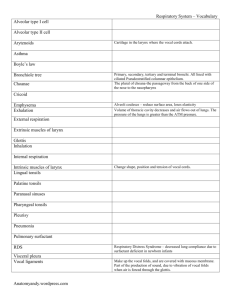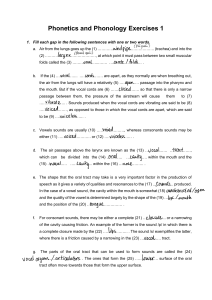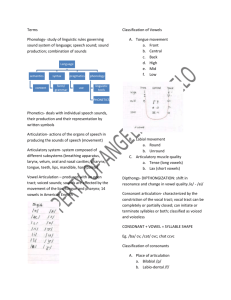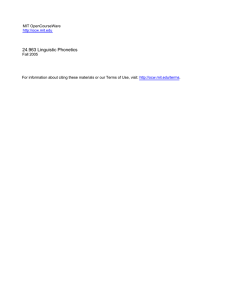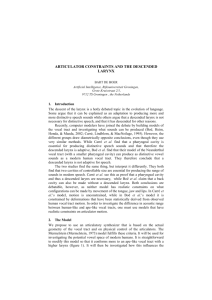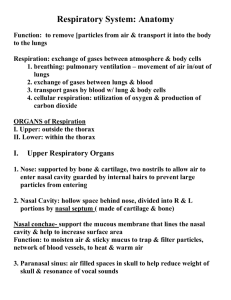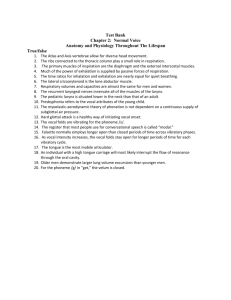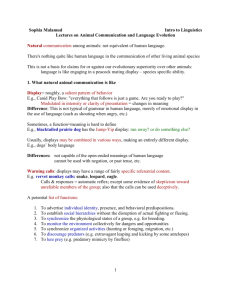The vocal tract (2) - Serwis Informacyjny WSJO
advertisement
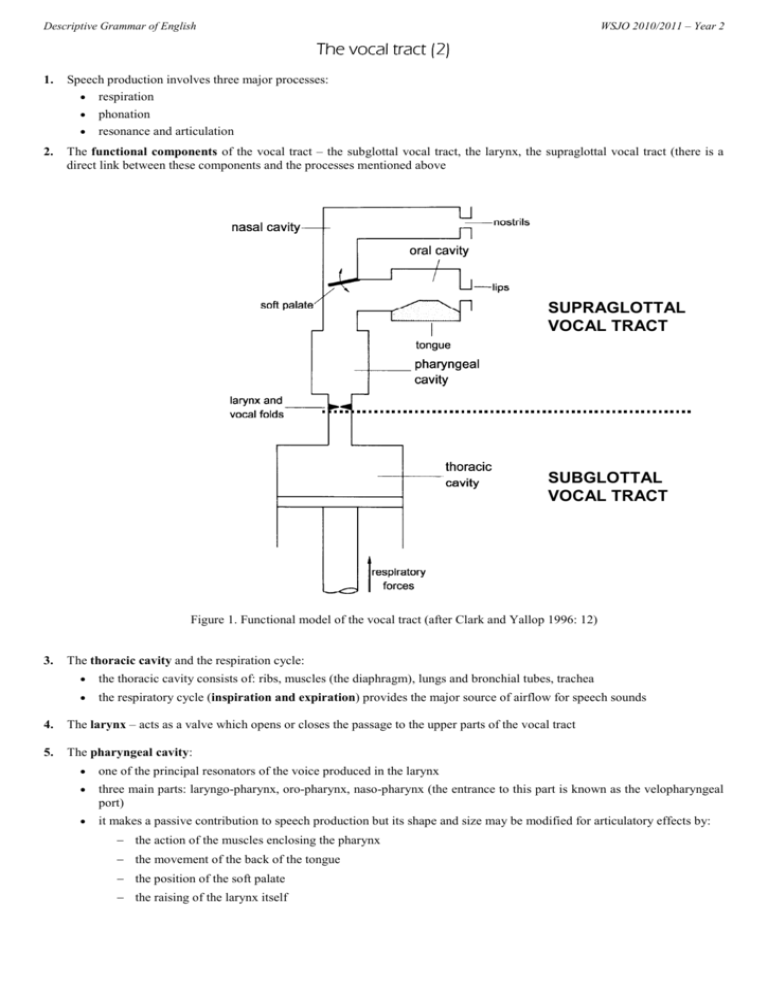
Descriptive Grammar of English WSJO 2010/2011 – Year 2 The vocal tract (2) 1. Speech production involves three major processes: • respiration • phonation • resonance and articulation 2. The functional components of the vocal tract – the subglottal vocal tract, the larynx, the supraglottal vocal tract (there is a direct link between these components and the processes mentioned above SUPRAGLOTTAL VOCAL TRACT SUBGLOTTAL VOCAL TRACT Figure 1. Functional model of the vocal tract (after Clark and Yallop 1996: 12) 3. The thoracic cavity and the respiration cycle: • the thoracic cavity consists of: ribs, muscles (the diaphragm), lungs and bronchial tubes, trachea • the respiratory cycle (inspiration and expiration) provides the major source of airflow for speech sounds 4. The larynx – acts as a valve which opens or closes the passage to the upper parts of the vocal tract 5. The pharyngeal cavity: • one of the principal resonators of the voice produced in the larynx • three main parts: laryngo-pharynx, oro-pharynx, naso-pharynx (the entrance to this part is known as the velopharyngeal port) • it makes a passive contribution to speech production but its shape and size may be modified for articulatory effects by: − the action of the muscles enclosing the pharynx − the movement of the back of the tongue − the position of the soft palate − the raising of the larynx itself Descriptive Grammar of English 6. 7. 8. WSJO 2010/2011 – Year 2 The oral cavity: • another resonator • its importance rests on our ability to control its shape and size by moving the tongue and other active articulators • relatively fixed boundaries of the oral cavity: the teeth, the hard palate and the pharyngeal wall (the remaining articulators are movable) The nasal cavity: • another resonating cavity • the nasal cavity has a complex shape, but it lacks muscular structure to vary its shape The soft palate: • a flexible muscular tissue ending at the uvula • the position of the soft palate: − raised: oral sounds are produced − lowered: nasalized sounds are produced − lowered with a complete obstruction to the airstream in the mouth (no oral escape): nasal sounds are produced 9. The larynx has a skeletal frame formed by a series of cartilages: Figure 2. The larynx: anterior and posterior views (after Clark and Yallop 1996: 179) • the cricoid cartilage forms the base of the larynx • the thyroid cartilage acts as a shield for the vocal folds • the arytenoids control positioning of the attached vocal folds • hinged to the upper part of the thyroid cartilage is the epiglottis
